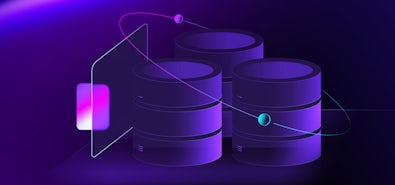
Each October, RoachFest gathers together application owners, architects, engineers, and operators running their data-intensive workloads on CockroachDB (along with other innovators who are exploring doing the same). This conference centers on our users: attendees share their work, meet their peers, and learn first-hand from the builders behind the database. They’re also the first to hear about our latest product and feature releases, and the new capabilities they unlock for users.
Product headlines at this year’s RoachFest focus on maturity and enterprise readiness. These include the news that our managed service CockroachDB dedicated is now generally available on Azure, and multi-region CockroachDB serverless is also now generally available for users to harness data distribution across cloud provider regions (while paying only for what they actually use). We are also introducing (in preview) our new MOLT Live Migration Service to give users the ability to live-migrate from a legacy database with zero-to-low downtime and no disruption of service.
Read on for more details, plus a few more new CockroachDB features and capabilities around observability, integrations with Datadog and Terraform, and support for Debezium and Oracle GoldenGate.
CockroachDB on Azure
From the very beginning, CockroachDB was built to maximize flexibility and control. The production-ready availability of CockroachDB for Microsoft Azure means CockroachDB is one of a select few distributed SQL database services accessible to all three major cloud providers.
We heard from many of our customers running self-hosted on Azure that they wanted to take advantage of our managed service, and the operational efficiency that comes with it. With CockroachDB-as-a-service on Azure,
- Teams in the Microsoft ecosystem can realize a complete cloud-first strategy with a cost-effective and automated database that integrates with their existing solution stack (and helps optimize their Azure spending).
- All CockroachDB users now have the ability to run their data-intensive applications anywhere and everywhere, effortlessly. Organizations can choose agnostically between single cloud providers, run across multiple cloud providers, and / or easily mix hybrid workloads between owned data centers and public cloud.
Learn more about CockroachDB on Azure.
CockroachDB serverless multi-region
CockroachDB serverless — our on-demand, pay per use, autoscaling managed service — now has production-ready multi-region capabilities, letting users distribute data across a cloud provider’s regions and lock it to specific locations. We also added custom metrics capability to expand and enhance observability to make CockroachDB’s serverless observability truly enterprise-ready. Users can now:
- Serve customers worldwide and address data latency and residency concerns, while only paying for the data and transactions you consume.
- On-demand, on-consumption, global CockroachDB clusters that function as a single logical database.
- More easily achieve high availability for their applications, control latency by placing data closer to end-users, and address regulatory compliance by managing data residency at the table – even row – level.
- Build customized dashboards directly in the CockroachDB Cloud console for critical metrics to help monitor your CockroachDB Serverless cluster in production.
Try CockroachDB serverless for free.
CockroachDB MOLT Live Migration Service
Database migrations are notoriously difficult, but the right tools and strong compatibility between your source database and target database can ease the process. The CockroachDB MOLT (Migrating Off Legacy Technology) suite of migrations tools helps application teams make migrations less painful by reducing the changes that must be made to your application.
Launching in preview, our new MOLT Live Migration Service allows CockroachDB customers to:
- Migrate mission-critical applications to CockroachDB without disrupting end-users.
- Teams can test and validate applications at production scale before migrating, ensuring a smooth migration process and ideal end-user experience.
- The Live Migration Service (MOLT LMS) allows customers to safely shadow production load traffic and validate results from CockroachDB before migration. Once teams are confident, MOLT LMS assists them in cutting over application traffic in a coordinated manner.
- Migrate from a legacy database with zero-to-low downtime, ensuring that your applications run without an interruption to your service.
Try MOLT LMS in public preview. And then let us know what you think — our teams work collaboratively with users to develop and iterate on the features and capabilities that are important for our customers. Talk to your technical rep or email contact@cockroachlabs.com.
But wait, there’s more!
Here are a few more new features to make your application (and maybe even your life) a little better:
- Deeper database observability in Datadog
This enhanced integration makes sure that essential CockroachDB metrics are available for alerting and detecting issues in Datadog. Teams can utilize granular SQL statistics to uplevel database observability into Datadog — providing greater database context and the ability to troubleshoot issues directly in Datadog.
- Terraform provider integration
New CockroachDB management capabilities for Terraform equal improved efficiency and performance during every phase of your data infrastructure lifecycle: provisioning, performance optimization, troubleshooting, and integrations.
- Support for additional migration tools: Debezium & Oracle GoldenGate
CockroachDB now supports additional migration tools: Debezium and Oracle GoldenGate.
Read all about the new features on our What’s New page.
What to do next
- Try out the new capabilities today on CockroachDB-as-a-service or CockroachDB self-hosted.
- Check out our feature demos and deep-dives on the CockroachDB YouTube channel.
Get started today!



